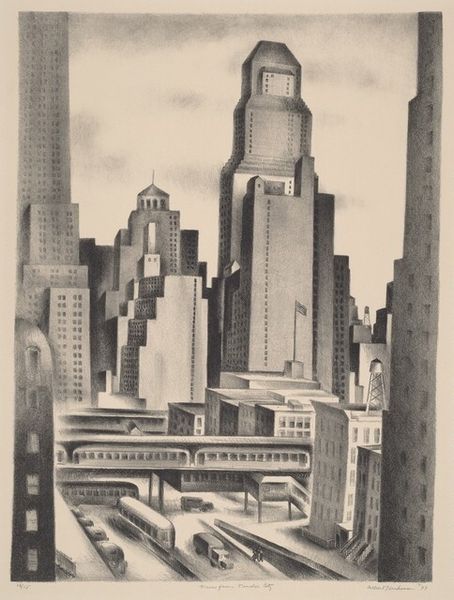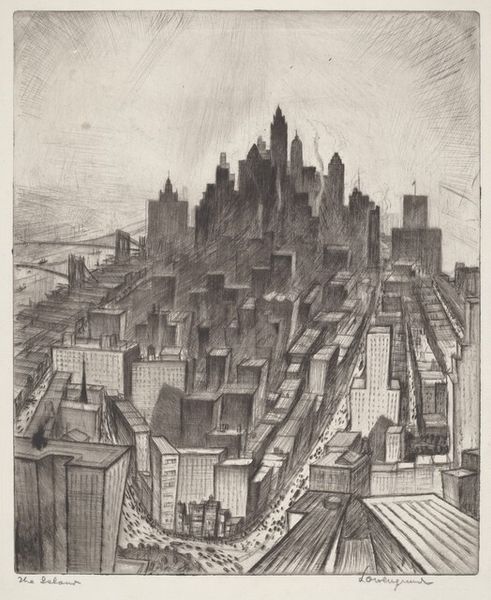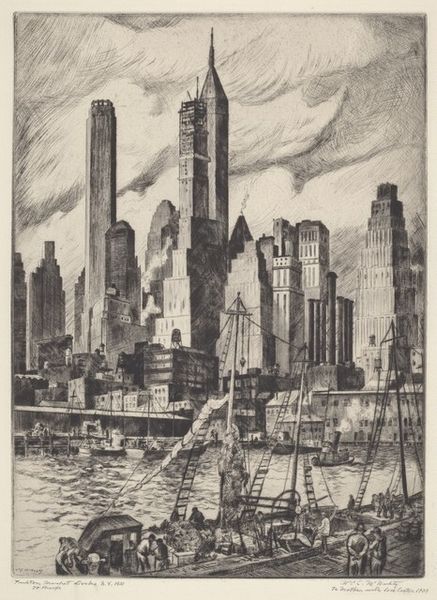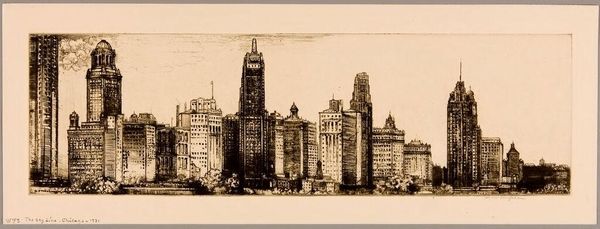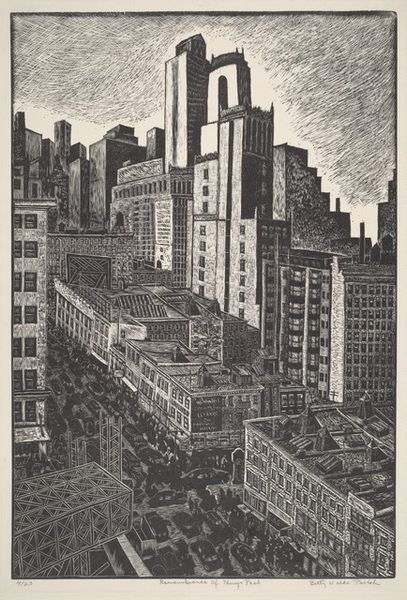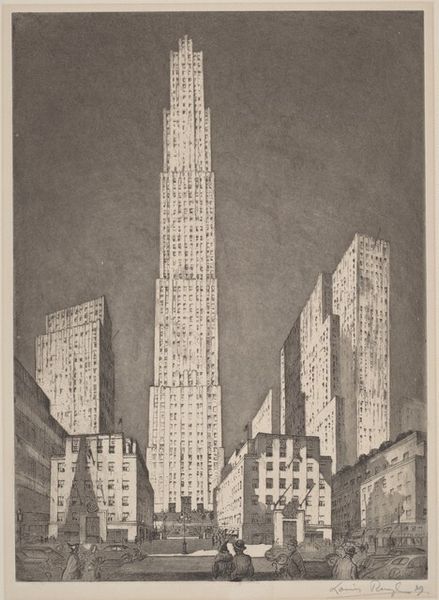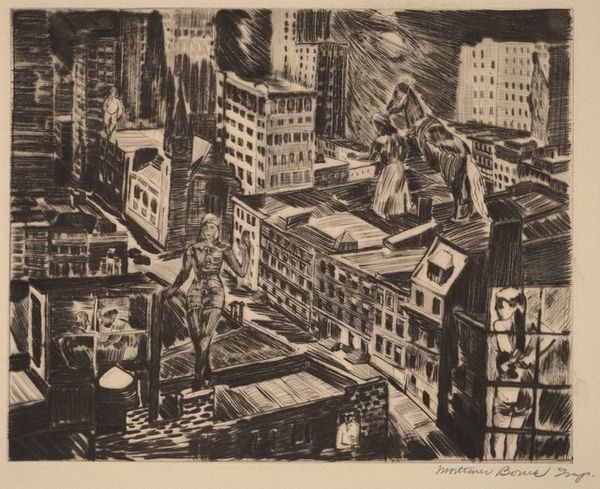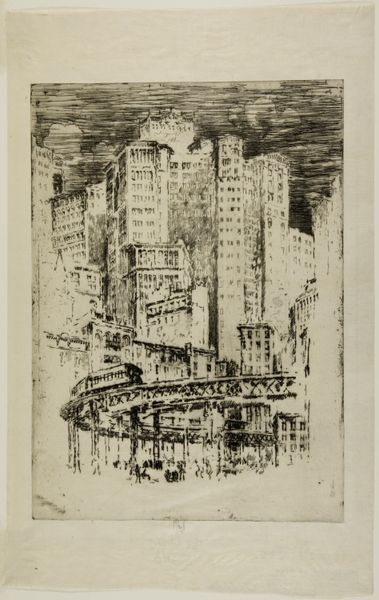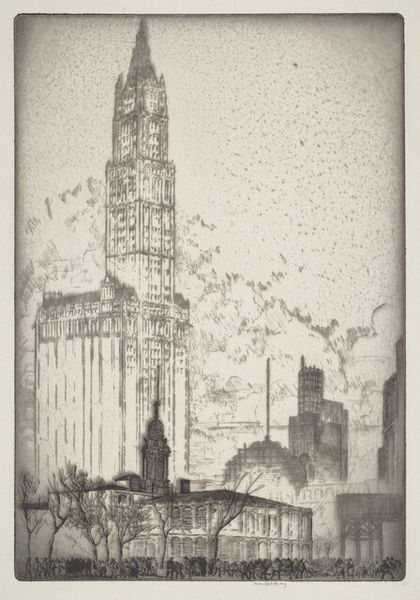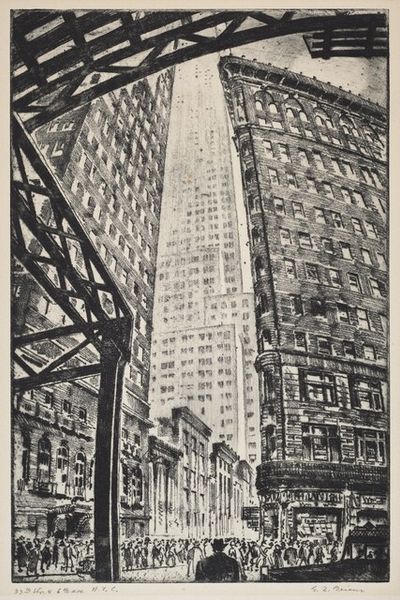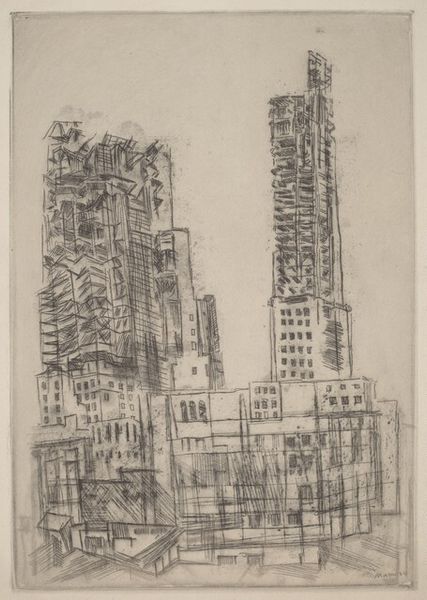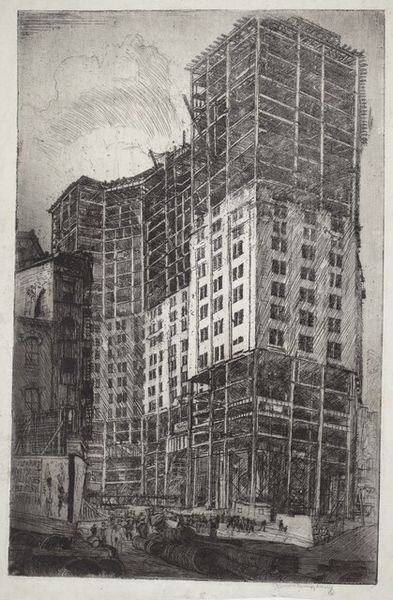
print, etching
#
precisionism
# print
#
etching
#
form
#
geometric
#
line
#
cityscape
#
modernism
Dimensions: image: 188 x 231 mm sheet: 275 x 302 mm
Copyright: National Gallery of Art: CC0 1.0
Editor: Here we have Margaret Lowengrund's "The New City," created around 1928. It's an etching, so a print. It’s quite striking, the way the buildings loom. What do you see in this piece, especially considering its materiality? Curator: The process of etching is key here. The lines are meticulously placed, aren't they? Each one demands a consideration of labor, a deliberate act that contributes to the image of the "new city." It isn't just a representation of urbanity; it’s about the very means of producing that representation. What kind of labor do you think went into creating these modernist skyscrapers that it represents? Editor: A lot of labor, obviously! But I see these ordered rows of windows... mass production, both of the etching and of the urban landscape itself. I guess the etching is a reflection on modernity's impact. Curator: Precisely. Think about the copper plate, the acid, the press – industrial materials employed to depict an industrial landscape. There's a fascinating dialogue happening between the means of production in the art and the means of production within the city Lowengrund is portraying. Where is the emphasis? Editor: That makes me think about the consumption aspect. Prints make art more accessible. Is Lowengrund making a statement about art as a commodity, mirroring the commodification of the city? Curator: An interesting point. This etching, as a multiple, allowed the image of the modern city to circulate widely, making the concept of "the new" available for consumption. Think of the social context. Who was buying these prints, and what did this imagery represent to them? It is modern living available for all? Or only a certain kind of modern? Editor: I hadn't considered the distribution aspect so closely. Now I'm seeing how deeply the artwork's materials and production are tied to the social and economic themes it depicts. Curator: And that understanding transforms the work, doesn't it? It is much more than just a pretty picture!
Comments
No comments
Be the first to comment and join the conversation on the ultimate creative platform.
